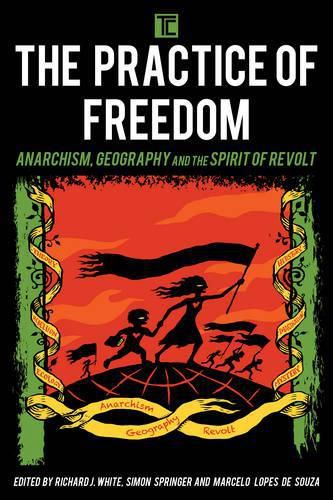Readings Newsletter
Become a Readings Member to make your shopping experience even easier.
Sign in or sign up for free!
You’re not far away from qualifying for FREE standard shipping within Australia
You’ve qualified for FREE standard shipping within Australia
The cart is loading…






The last two decades have seen a re-birth of practices and principles that connect with the ‘soul’ of left-libertarianism, although they may not explicitly engage with the anarchist tradition. From practices of mapping and land-use planning to local protests and transnational social movements, this book explores a variety of case studies that trace the influences of, and affinities between, anarchist and geographic practice. The chapters explore the vast possibilities of inventive, exploratory libertarian practices from contemporary and historic contexts around the globe. They examine the ways in which various spatial practices have been compatible with left-libertarian principles, and explore the extent to which anarchists, neo-anarchists and libertarian autonomists have animated these waves of protest and forms of resistance. In an age that is desperately in need of critical new directions, this volume shows that a serious (re)turn toward anarchist thought and practice can challenge and inspire geographers to travel beyond their traditional frontiers of geographical praxis.
$9.00 standard shipping within Australia
FREE standard shipping within Australia for orders over $100.00
Express & International shipping calculated at checkout
Stock availability can be subject to change without notice. We recommend calling the shop or contacting our online team to check availability of low stock items. Please see our Shopping Online page for more details.
The last two decades have seen a re-birth of practices and principles that connect with the ‘soul’ of left-libertarianism, although they may not explicitly engage with the anarchist tradition. From practices of mapping and land-use planning to local protests and transnational social movements, this book explores a variety of case studies that trace the influences of, and affinities between, anarchist and geographic practice. The chapters explore the vast possibilities of inventive, exploratory libertarian practices from contemporary and historic contexts around the globe. They examine the ways in which various spatial practices have been compatible with left-libertarian principles, and explore the extent to which anarchists, neo-anarchists and libertarian autonomists have animated these waves of protest and forms of resistance. In an age that is desperately in need of critical new directions, this volume shows that a serious (re)turn toward anarchist thought and practice can challenge and inspire geographers to travel beyond their traditional frontiers of geographical praxis.